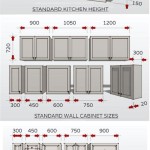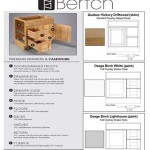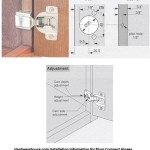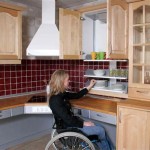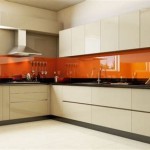Wine Rack Solutions for Inside Kitchen Cupboards
Optimizing kitchen space necessitates creative storage solutions. A dedicated wine rack within a kitchen cupboard offers an efficient and aesthetically pleasing method for wine storage, keeping bottles organized, protected from direct light, and readily accessible. This article will explore the various aspects of incorporating a wine rack inside a kitchen cupboard, focusing on design considerations, installation techniques, different types of racks, and the advantages and disadvantages of this particular storage approach.
The integration of a wine rack within a kitchen cupboard fundamentally transforms underutilized space into a functional and visually appealing storage area. By strategically placing a wine rack inside an existing cupboard, homeowners can avoid the need for standalone wine storage units that may occupy valuable floor space. This solution is particularly beneficial in smaller kitchens where space is at a premium.
Key Considerations Before Installation
Before embarking on the installation of a wine rack inside a kitchen cupboard, a thorough assessment of several key factors is crucial. These considerations will determine the appropriate type of rack, its placement within the cupboard, and any necessary modifications to the existing structure.
Cupboard Dimensions and Capacity: The first step involves accurately measuring the internal dimensions of the intended cupboard. This includes the width, depth, and height. These measurements will dictate the maximum size of the wine rack that can be accommodated. Consider the number of bottles you intend to store. A larger collection will require a larger rack, potentially necessitating the use of multiple shelves or a taller rack design. Ensure that the chosen rack provides sufficient clearance for the bottles to be easily inserted and removed without hitting the cupboard walls or shelves above.
Weight Capacity: Wine bottles, particularly when filled, can be quite heavy. It is imperative to evaluate the load-bearing capacity of the cupboard shelving and structure. If the shelves are made of thin material or appear unstable, reinforcement may be necessary. This can be achieved by adding additional support brackets or replacing the existing shelves with thicker, more robust materials. Failure to address weight concerns could lead to structural failure and potential damage to the cupboard and the wine collection.
Environmental Factors: While a cupboard provides some protection from direct light, it is important to consider other environmental factors that can impact the quality of the wine. Excessive heat and humidity can accelerate the aging process and degrade the wine's flavor. Avoid placing wine racks near heat-generating appliances such as ovens or dishwashers. If the cupboard is located in a particularly humid area, consider using a dehumidifier to maintain a more stable environment. Furthermore, ensure adequate ventilation within the cupboard to prevent the buildup of stale air and potential mold growth.
Types of Wine Racks Suitable for Cupboards
A variety of wine rack designs are available, each with its own advantages and disadvantages. The selection of the appropriate type depends on the available space, the number of bottles to be stored, and the desired aesthetic.
Horizontal Wine Racks: These racks typically feature individual slots or cradles for each bottle, positioned horizontally. This orientation is ideal for preserving wine quality, as it keeps the cork moist and prevents it from drying out and crumbling. Horizontal racks are available in various materials, including wood, metal, and plastic. Modular units can be stacked or arranged to maximize space utilization within the cupboard. These racks are often easy to install, requiring minimal assembly and typically relying on screws or adhesive to secure them to the cupboard shelves.
Vertical Wine Racks: These racks store bottles vertically, with the neck of the bottle pointing upwards. While vertical storage may conserve space, it is generally not recommended for long-term storage, as it can cause the cork to dry out over time. Vertical racks are best suited for wines intended for immediate consumption. These are often simple designs made of metal or plastic and are readily available in various sizes to fit different cupboard dimensions.
Stackable Wine Racks: These racks are designed to be stacked on top of each other, allowing for flexible storage options. They are often made of wood or plastic and can be easily assembled and disassembled. Stackable racks are a good choice for expanding wine collections, as additional units can be added as needed. The ease of assembly and the ability to customize the configuration make them a versatile option for different cupboard sizes and shapes.
Pull-Out Wine Racks: These racks are designed to slide out of the cupboard, providing easy access to the wine bottles. They are typically made of metal and feature smooth gliding mechanisms. Pull-out racks are particularly useful for deep cupboards, as they eliminate the need to reach to the back to retrieve bottles. They offer a convenient and ergonomic storage solution, although they may require more complex installation and may be more expensive than other types of racks.
DIY Wine Racks: For those with woodworking skills, constructing a custom wine rack can be a rewarding project. DIY wine racks can be tailored to the exact dimensions of the cupboard and can be made from a variety of materials, such as wood, metal pipes, or even repurposed materials. This allows for complete customization and the potential to create a unique and personalized storage solution. However, building a DIY wine rack requires careful planning, precise measurements, and the necessary tools and skills.
Installation Techniques and Best Practices
The installation process for a wine rack within a kitchen cupboard will vary depending on the type of rack chosen. However, some general guidelines and best practices apply to most installations.
Preparation is Key: Before starting the installation, gather all the necessary tools and materials. This may include a drill, screwdriver, measuring tape, level, screws, adhesive, and safety glasses. Clear the cupboard of any existing items and thoroughly clean the interior surfaces. Ensure that the area is well-lit and ventilated. Accurate measurements are essential for a successful installation, so double-check all dimensions before proceeding.
Secure Attachment: The wine rack must be securely attached to the cupboard shelves or walls to prevent it from shifting or collapsing under the weight of the wine bottles. Use appropriate screws or adhesive for the material of the cupboard. For wooden cupboards, screws are generally the preferred option, as they provide a strong and reliable hold. For laminate or particleboard cupboards, adhesive may be necessary in addition to screws to prevent the screws from stripping out. Ensure that the screws are the correct length to avoid penetrating the back or sides of the cupboard.
Leveling and Alignment: Ensure that the wine rack is level and properly aligned within the cupboard. Use a level to check the horizontal and vertical orientation of the rack. Adjust the position as needed to ensure that the bottles will be stored securely and without any risk of rolling or tipping. Proper alignment also contributes to the overall aesthetic appeal of the installation.
Reinforcement if Necessary: As mentioned earlier, reinforcement may be required if the cupboard shelves are not strong enough to support the weight of the wine bottles. This can involve adding additional support brackets or replacing the shelves with thicker, more durable materials. Reinforcement is particularly important for pull-out wine racks, as they exert additional stress on the cupboard structure when extended.
Safety Precautions: Always prioritize safety during the installation process. Wear safety glasses to protect your eyes from flying debris. Use caution when operating power tools and follow the manufacturer's instructions. If you are unsure about any aspect of the installation, consult with a professional carpenter or handyman.
By carefully considering these factors and following proper installation techniques, homeowners can successfully integrate a wine rack within a kitchen cupboard, creating a functional and aesthetically pleasing storage solution that enhances their kitchen space.

Easy Wine Rack For Metod Kitchen Cabinet Ers

Amazing Diy Wine Storage Ideas Kitchen Cabinet Rack

Introducing 3 Great Ways To Update Your Kitchen Cabinets Cabinet Wine Rack Design Corner

In Cabinet Wine Racks By Logic Kitchen Storage Solutions

Wine Rack Inserts For Kitchen Cabinet Wood And Metal Backlit

Custom Wine Cabinet Design Ideas

Wine Storage Ideas Cabinets Rack

Butler Pantry Wine Rack Design Ideas

Diy Built In Wine Rack The Plan Lone Oak Design Co

A Sleek New Kitchen Storage Solutions Kraftmaid Cabinets Planner
Related Posts

